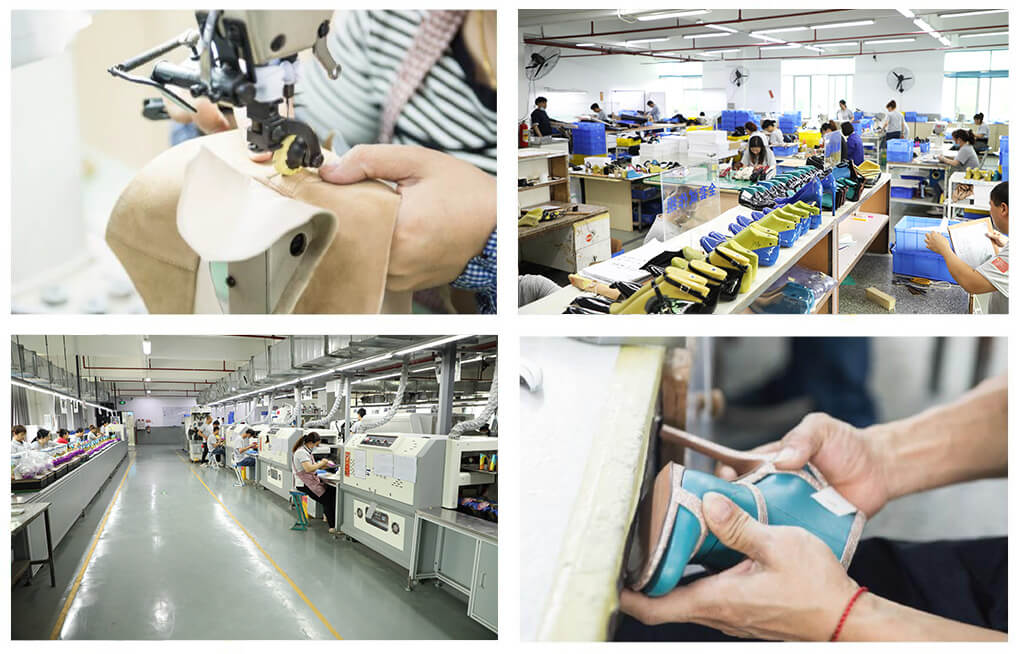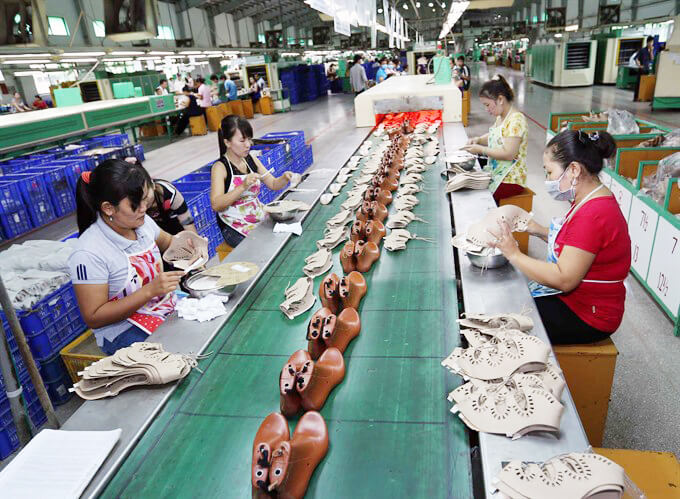Chinese shoe manufacturers VS Indonesian shoe manufacturers
softluxx2025-05-16T10:52:01+08:00At the end of my last article, I mentioned that the high tariff issue between China and the United States would be resolved in the next 1-2 months. Unexpectedly, only one month after the United States proposed to increase tariffs, both sides reached a settlement and restored a normal international trade relationship. Once the policy agreement is released, it is believed that it will have varying degrees of impact on manufacturers around the world, including Chinese shoe manufacturers and Indonesian shoe manufacturers.
I would like to take this opportunity to introduce the advantages and disadvantages of Indonesian and Chinese shoe manufacturers at this stage. I hope this will be helpful to you.

Top 10 shoe exporting countries in 2024
According to the latest report on the footwear industry in 2024, the top ten footwear exporters in the world are China, Italy, Vietnam, Germany, Turkey, Indonesia, India, Belgium, France, and the Netherlands. China ranks first in exports, accounting for more than 60% of the world’s total exports. Vietnam and Turkey’s shares in global exports have increased significantly. Europe, especially Germany, has also boosted its export share.
Here is a more detailed breakdown:
1)China: Leading exporter, accounting for more than 60% of global footwear exports. Compared to previous years, this has dropped by 5%.
2)Italy: A major player in luxury footwear exports.
3)Vietnam: An important exporter, with a rapidly growing share of the global market.
4)Germany: Its share of global exports has increased, especially in Europe.
Turkey: Exports have risen significantly.
5)Indonesia: Exports have grown rapidly in recent years, leading to the highest overall growth rate.
6)India: Exports continue to grow steadily.
7)Belgium: Major importer and exporter of footwear
8)France: Major importer and exporter of footwear.
9)Netherlands: Important exporter, particularly within Europe.
Summary: Comparing China and Indonesia, China still ranks first, but the overall trend is downward. The export share will gradually be taken away by Southeast Asia. Indonesia is still in the initial stage of footwear manufacturing, but its export share has been steadily increasing, and the growth trend is substantial. Additionally, Indonesia has great potential and the ability to attract foreign investment.
Why should the footwear manufacturing industry gradually shift from China to Southeast Asia?
On one hand, I would like to discuss historical reasons. According to the trade war in 2018, some lessons can be summarized. Driven by the first Sino-US trade war and the global push for supply chain diversification, Southeast Asia has become a key strategic destination in the decoupling of China and the United States. Footwear giants Nike and Adidas have closed numerous OEM factories in China and relocated to Vietnam and Indonesia. According to the latest data released by footwear news in 2024, Vietnam currently accounts for 52% of Nike’s global footwear production, Indonesia accounts for 20%, and China’s share has dropped below 19%. The remaining share is allocated to Indian footwear manufacturers. Adidas has also demonstrated a similar shift, with about 43% of global footwear production coming from Vietnam, approximately 28% from Indonesia, while China’s share has fallen to 16%.
On the other hand, with China’s rapid economic development, accompanied by rising labor costs and a gradual decrease in the number of young workers engaged in footwear manufacturing, this poses a significant cost challenge for large-scale production and is far less attractive than footwear manufacturers in Vietnam and Indonesia.
Advantages and disadvantages of Chinese shoe manufacturers
Advantages of Chinese shoe manufacturers:
1. Multiple shoe types: Chinese shoe manufacturers cover all shoe categories on the market—sneakers, leather shoes, sandals, high heels, boots, etc.—and can produce high-tech and high-value-added footwear products.
2. Development capabilities: Some Chinese shoe manufacturers have strong and robust development capabilities. You only need to connect your bold and innovative shoe design draft to them, and they can create an identical sample pair for you in a short time.
3. Economies of scale: China’s manufacturing capabilities generally allow for large-scale production, saving costs for companies with bulk orders.
4. Efficiency and technology: Chinese shoe manufacturers employ advanced technology and efficient production processes, which shorten order turnaround time.
5. Diverse supply chain: China has a comprehensive and varied supply chain that simplifies the procurement of various materials for shoe production.
6. Strong infrastructure: The country boasts excellent infrastructure that ensures smooth transportation and logistics in the footwear industry.
7. Experience, technology, and expertise: Chinese shoe manufacturers possess extensive experience, technology, and expertise, having been involved in the production of various types of shoes for a long time.
8. Rich resources: China is one of the world’s largest manufacturing bases with abundant labor and raw material resources, providing a strong production foundation for Chinese shoe factories.
9. Global influence: With years of accumulated experience, Made in China has become greatly recognized worldwide, akin to the reputation of a leading shoe brand. As the world’s largest shoe producer, it exports around 60% of the world’s shoes, catering to the international market.
10. Quality assurance: Quality is paramount for many consumers. With the previous nine advantages as a foundation, and a comprehensive quality inspection process that includes raw material inspection, semi-finished product checks, and final product assessments, Chinese shoe manufacturers can produce high-quality and valuable products.
Disadvantages of Chinese shoe manufacturers:
1. Rising labor costs: An obvious disadvantage is that China’s labor costs are increasing, which weakens the historical cost advantages that once attracted companies.
2. Lack of young labor: China has a large population base but is experiencing an aging demographic. This poses a challenge for the labor-intensive shoe manufacturing industry, as it requires an adequate and youthful workforce.
3. Communication challenges: Language and cultural differences can create communication obstacles for international businesses partnering with Chinese manufacturers.
4. Reduced government support: The Chinese footwear industry no longer receives significant government backing. As a highly polluting, low-tech industry, it conflicts with the government’s focus on promoting more environmentally friendly and technologically advanced sectors.
Advantages and disadvantages of Indonesian shoe manufacturers
Advantages of Indonesian shoe manufacturers:
1. Low labor costs: Although Indonesia’s experience in shoe manufacturing is not as extensive as that of China and Vietnam, the overall labor costs are significantly lower than in countries such as China and Vietnam. For shoe brands, especially those with large-scale production, this can lead to substantial cost savings.
2. Exquisite craftsmanship in certain shoe categories: Indonesian shoe manufacturers produce various types of shoes – including leather formal shoes, sports shoes, safety boots, and vulcanized rubber soles. Many factories specialize in niche areas, such as safety boots and vulcanized rubber sole shoes, consistently maintaining quality thanks to their long-term production experience.
3. Strategic location in Southeast Asia: Situated in the heart of Southeast Asia, Indonesia benefits from convenient transportation access to the United States, Europe, Australia, and other major Asian markets. Additionally, Indonesia has benefited from regional trade agreements like ASEAN, which facilitate smoother exports at generally lower costs.
4. Government support policies: The Indonesian government has actively encouraged manufacturing and exports in recent years. From tax incentives to infrastructure improvements, the government has worked diligently to attract foreign investment into the shoe manufacturing sector.
Disadvantages of Indonesian shoe manufacturers:
1. Lack of supply chain integrity: Despite its rapid development, the Indonesian shoe manufacturing industry still suffers from an imperfect supply chain, relying on imports for many raw materials from China, such as uppers, insoles, soles, and other components. This dependence leads to limited development capabilities and a reliance on large-scale production, preventing the formation of a self-sufficient system.
2. Scale and efficiency of manufacturers: Aside from some factories specializing in OEM for brands, many small shoe manufacturing factories in Indonesia operate at a significantly lower scale and efficiency compared to Chinese factories, which can pose challenges in fulfilling bulk orders and necessitate additional coordination and planning.
3. Delivery cycle: Compared to Chinese shoe manufacturers, those in Indonesia have longer delivery cycles. The reliance on imported materials limits flexibility in responding to emergencies, extending production timelines. For time-sensitive companies, this aspect could affect overall supply chain management.

Should you choose Indonesian or Chinese shoe manufacturers?
1. Choosing Indonesian or Chinese shoe manufacturers depends on your specific needs and priorities, along with weighing the pros and cons of each option.
2. It should also be noted that different shoe manufacturers within the same country have varied advantages and disadvantages.
3. Indonesian and Chinese shoe manufacturers each offer their own strengths and weaknesses. To make an informed decision, consider reaching out to potential suppliers in both regions simultaneously. By doing so, you can efficiently gather information, compare products, and ultimately find the supplier that best suits your requirements.
Last words
If you want to find Indonesian and Chinese shoe manufacturers efficiently and quickly, you can review the 2 articles I wrote before: 1.How to find Chinese shoe manufacturers? 2.How to find Indonesia shoe manufacturers? Thanks!
Finally, I would like to mention that it is not difficult to see that the shoe manufacturing sectors in Indonesia and Vietnam are in a competitive relationship. What sets them apart from China and European countries is that both lack core technology and competitiveness. As the shoe manufacturing in Indonesia continues to mature, it is predicted that it will gradually erode Vietnam’s export share.


Leave a Reply
You must be logged in to post a comment.